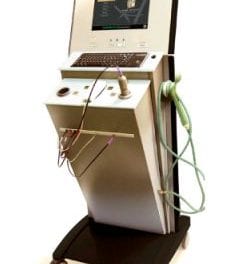
Cosmetic gynecology procedures including labiaplasty, clitoral hood reduction, labia majora reductions, and even G-spot amplification, are increasing in popularity. In 2011, there were 2,142 vaginal rejuvenation procedures performed, up 5.5% from 2010, according to statistics from the American Society for Aesthetic Plastic Surgery.
To find out what is driving this trend, Plastic Surgery Practice sat down with Christine Hamori, MD, a board-certified plastic surgeon based in Duxbury, Mass. Her lecture on this topic was one of the most anticipated and well-attended lectures at the recent Aesthetic Plastic Surgery / Anti-Aging Medicine: The Next Generation Symposium in New York City.
PSP: Cosmetic gynecology is a unique niche for a plastic surgeon. How did you develop your expertise and interest?
CH: My sister-in-law, [urologist] Jen Berman, MD, encouraged me to try a labiaplasty and guided me through it. I started doing them, and patients were happy. Likely because I am a female plastic surgeon, they gravitated toward me.
PSP: How much of your practice is devoted to cosmetic gynecology?
CH: About 10 percent, but I do a lot. About 70 percent are labiaplasties, and 30 percent are labia majora reductions. I also perform clitoral hood reduction and volume restoration of the mons and labia majora.

Before and 3 months after fat injections.
PSP: What is driving the increased patient interest in these procedures?
CH: Brazilian bikini waxes. Today, pubic hair is removed. Many women consider the dangling and visibility of the labia minora to be unattractive and request surgical procedures to improve the appearance of this area.
PSP: Who are your patients?
CH: My patients are not porn stars. They are normal working women. Many are nurses, for example, who see other women’s vaginas and notice that theirs don’t look the same.
PSP: What brings these patients to your office?
CH: For the majority, patients dislike the appearance when they look in the mirror. Most commonly, they are concerned with any labia show or protrusion of the minora beyond the majora. Some women see other women in the locker room who look different than they do down there. Once they learn about these procedures online, they often say to me, “I thought I had to live like this. I didn’t know I could have this surgery.”
PSP: Are your patients happy after the process?
CH: They are as happy as can be. These surgeries can change their lives and leave them feeling much more confident.

Preop and postop fat injection to the mons pubis and the labia majora.
PSP: How do you treat deflation of the labia majora?
CH: Women often develop laxity and deflation of the labia majora as they age. I use fillers such as Restylane or fat. If a woman is having a tummy tuck, I can remove some fat and put it back in the labia majora to conceal the labia minora to create a more balanced look. Fat definitely provides the most natural results, and often results in improvement in pigmentation as well.
PSP: Do you ever treat postbariatric surgery patients?
CH: Yes. I have been seeing more and more of these women specifically with complaints of wrinkly labia majoras. Oftentimes, their mons pubis hangs over and they can barely see their labia majora.
PSP: Do you perform the G-spot amplification procedure?
CH: No. I leave the functional procedures to the gynecologists. Identifying the G-spot can be tricky, and as a plastic surgeon, I prefer to treat the aesthetics of this area.
PSP: Do these procedures hurt?
CH: They are not painful. The labia are like an ear lobe—two opposing mucosal surfaces with few nerves. I use a topical cream and inject a numbing agent. Patients are frightened by potential pain, but it is nothing like the pain associated with the ripping of a Brazilian bikini wax. Patients need pain medication for a couple of days, but they feel very little during the actual surgery. Most mature patients choose local anesthesia, whereas young patients tend to prefer general anesthesia.
PSP: What does recovery look like?
CH: Women ice the area and stay off of their feet. It takes about 6 weeks before you can have sex, ride a bicycle, go horseback riding, or play contact sports. There is no catheter required, and you can use a tampon as needed. Women use a squirt bottle to clean the treated area and apply estrogen cream for 3 weeks. All in all, the complications are few. Smokers and obese patients are at the greatest risk for wound healing problems. Patients who are non-compliant with exercise restrictions may develop bleeding.
PSP: Do you consider these procedures cosmetic or reconstructive?
CH: They can be both. I often repair damage from an episiotomy or labia tears that occurred during delivery. Some young girls have asymmetry issues. One side of their labia develops and the other one doesn’t. In these cases, the girl is traumatized because the labia do not match and she is likely anxious about sexual activity due to her asymmetric appearance. They want the developed side reduced to match the side that has not developed.
PSP: Who isn’t a candidate for these procedures?
CH: It needs to be something that women want to do for themselves, not because their partner is pushing them. In these cases, I will say, “I don’t feel comfortable, and I don’t think this is something that will make you happy.”
PSP: How can an interested plastic surgeon become schooled in these delicate procedures?
CH: You have to be taught the techniques. Be very conservative and start with a case that is not too difficult. There are many papers on how to do them. Take a simple case such as redundant labia minora first to gain confidence.
PSP: Can or should obstetricians or gynecologists perform these procedures?
CH: Gynecologists may not be familiar with the fine suturing needed and may not have as keen of an aesthetic eye as plastic surgeons. They are the experts at removing the uterus or cancer and delivering babies, but these procedures are much different than addressing the appearance of the labia minora.
PSP: What does the future hold in terms of cosmetic gynecology?
CH: This is trending up and up. More women out there are reading about these procedures on the Internet and seeing pictures of other women’s vaginas. I think this will only become more in demand. My teaching courses are popular among plastic surgeons at our national meetings.
Denise Mann is the editor of Plastic Surgery Practice. She can be reached at [email protected].




